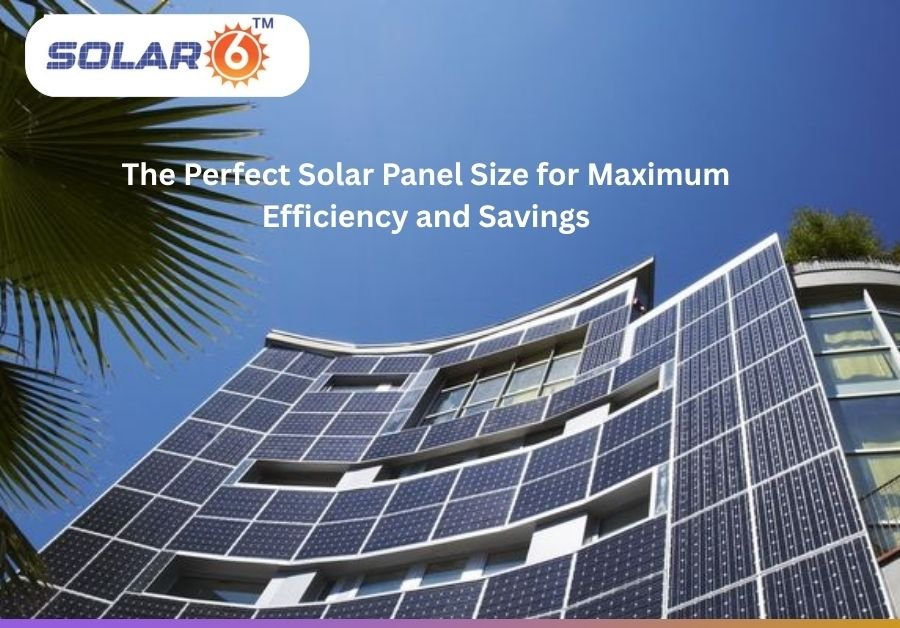Choosing the right solar panel size is one of the most vital steps in creating a green, value-powerful solar electricity system. It determines the amount of power your device can generate and immediately impacts both your performance and long-term cost savings. Yet, choosing the right suit, whether for a domestic or business occasion, can be difficult without the right records.
We’ll go over all you need to know about solar panel sizing in this guide. From system and cell dimensions to wire and cable charts, we’ll help you understand how to pick out the ideal components for your space, budget, and energy requirements.
Understanding the Basics of Solar Panel Sizing
Solar panel sizing is crucial to make sure your gadget generates the ideal amount of electricity to meet your daily power needs. This depends upon several factors, which include:
- Sunlight exposure based on your location
- Available roof or ground space for panel installation
- Your energy consumption pattern
- Budget for initial investment and future expansion
Whether you’re setting up a residential system or a large commercial array, using a solar system size chart will simplify the selection process.
Solar Panel System Size Chart
Here’s a simplified solar panel size chart to help identify which size suits your needs best
| Panel Size | Capacity | Best For |
| Small Panels | 50 – 100 W | Compact needs—camping, lighting, small gadgets |
| Medium Panels | 200 – 300 W | Average household appliances, lighting |
| Large Panels | 350 – 400 W+ | Larger homes, business operations, and high consumption |
Determining the Ideal Solar System Size
To pick the proper gadget, you’ll need to align three key factors: your energy desires, to be had space, and solar panel efficiency. Here’s how to do it:
1. Assess Your Energy Usage
Calculate your day-by-day and month-to-month power usage (in kilowatt-hours or kWh). Account for all important electrical home equipment, HVAC structures, lights, and any additional energy-hungry devices.
2. Evaluate Sunlight Exposure
Regions with more daylight, according to the day, will require fewer panels than regions with lower sunlight ranges. Sunlight hours without delay affect how lots electricity your solar panels will generate.
3. Match With Panel Efficiency
Choose solar panels that provide the very best efficiency within your finances. Efficient panels produce extra energy in much less space, which is right if your roof space is restricted.
Solar Panel Dimensions Chart
Knowing the scale of your panels is important for proper layout and space usage. Here’s a breakdown:
| Panel Size | Dimensions (Approx.) | Applications |
| Small | 1.4m x 0.7m | Limited areas like balconies, sheds |
| Medium | 1.6m x 1m | The average rooftops of houses |
| Large | 2m x 1m | Large rooftops or ground-mounted commercial use |
Understanding the kWh Solar Panel Output Chart
The kWh output chart helps you estimate how much energy different panel sizes will produce. For instance:
- A 300W panel can generate 1.2 – 1.5 kWh/day, depending on the vicinity.
- A 400W panel might produce 1.5– 2.0 kWh/day
Multiply this by the quantity of panels you intend to put in to get an estimate of your device’s general daily power output.
Solar Cable Size Chart
Choosing the precise cable length is vital for protection, minimizing energy loss, and system sturdiness. Here’s a pattern sun cable length chart:
| Max Watts | 1m | 3m | 5m | 10m | 15m | 20m |
| 40 W | 0.5mm² | 0.5mm² | 0.5mm² | 1.0mm² | 1.0mm² | 1.5mm² |
| 72 W | 0.5mm² | 0.5mm² | 0.5mm² | 1.0mm² | 1.5mm² | 2.0mm² |
| 144 W | 0.5mm² | 1.0mm² | 1.0mm² | 2.0mm² | 3.0mm² | 4.0mm² |
| 240 W | 0.5mm² | 1.0mm² | 2.0mm² | 3.5mm² | 5.0mm² | 10.0mm² |
Choosing the correct wire size ensures your system handles current efficiently and avoids overheating or power loss.
Solar Cell Size Chart
Solar cells are the building blocks of panels. Their size affects panel output and efficiency:
| Cell Size | Application |
| Small (4×4 inches) | Compact, portable panels for very low power devices |
| Standard (6×6 inches) | Residential panels: balance of size and output |
| Large (8×8 inches) | High-performance commercial panels; maximum efficiency, more space |
Choosing the Right Solar Wire Size
To preserve performance and comply with regulations, remember:
Current Carrying Capacity: Wires must effectively take care of the machine’s current output.
Voltage Drop: Over lengthy distances, improper wire sizes can lead to voltage drops, lowering overall performance.
Compliance: Always use wires that meet nearby safety codes and solar setup standards.
Conclusion:
Selecting the correct solar panel length, cable gauge, and machine configuration is key to maximizing the cost of your solar setup. These charts covering system length, panel dimensions, cell sizes, and wiring provide a reliable roadmap to help you make the right decision.
Whether you are powering a single domestic or a commercial asset, choosing the proper components way greater financial savings and extra energy independence. Solar6 is dedicated to guiding you every step of the way.
If you are ready to take control of your strength destiny, Solar6 presents the gear, generation, and help to construct the correct sun solution.
Let Solar6 be your accomplice in harnessing easy, green, and sustainable sun energy—tailor-made just for your roof and your needs.

